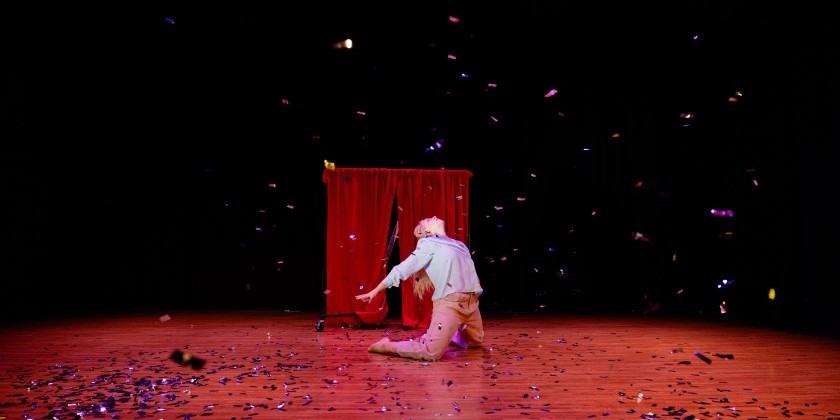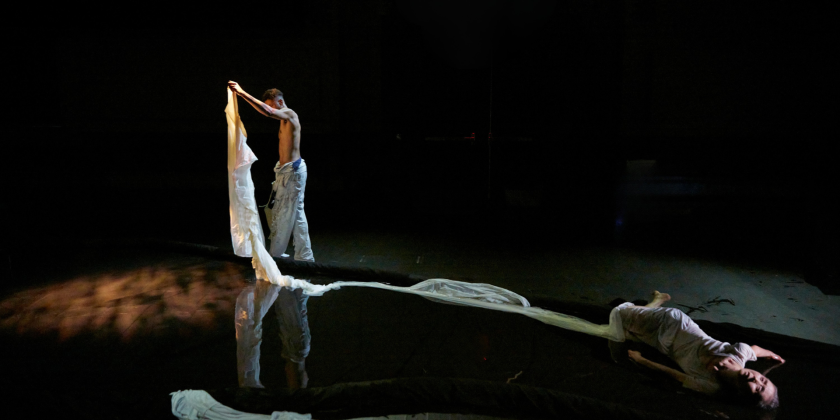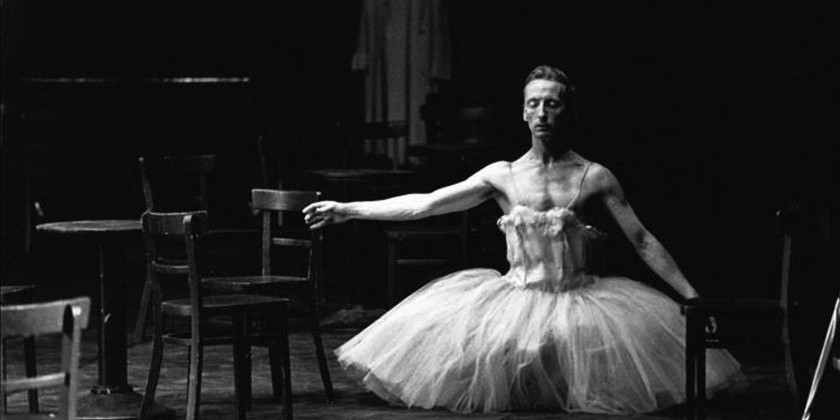Edinburgh or Bust
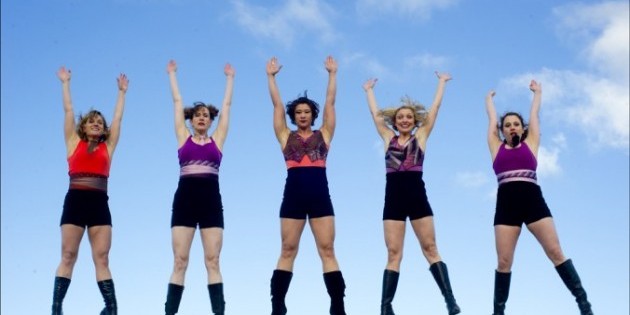
Shelly Gilbride sends us a Postcard from The Bay Area as she prepares to get to Edinburgh.
Getting to The Fringe Festival
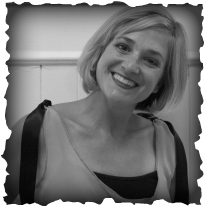 |
| Shelly Gilbride - Dancer with A Mused Collective and Founder of PDA: Public Dance Acts |
- Shelly Gilbride received her PhD in Performance Studies from UC Davis in 2009. She is the founder of PDA:Public Dance Acts and is a dancer with the Linda Bair Dance Company and A Mused Collective. She is going to perform at The Fringe this month!
There are Fringe Festivals in almost every major city in the U.S. ( I've counted 16) and in many countries across the world. These theatrical extravaganzas celebrate unbridled creativity, uninhibited performance, endless opportunity and democracy. Genres explode, disciplines cross, humor abounds, and risks are taken. I have experienced Philly Fringe, San Francisco Fringe, Boulder Fringe and New York Fringe. And what I love about Fringes everywhere is the air of possibility--of experiencing performance greatness or bizarre oddity or even shows so terrible that they are funny.
But there is only one Edinburgh Festival Fringe. It is the biggest, most established, open-access, performing arts festival in the world. For the month of August, the city of Edinburgh, Scotland opens its proverbial doors, windows and streets to performers of every artistic genre (and those whose talent cannot yet be categorized) who flock there from around the world to share in the Fringe experience. Any artist who can find a venue to host their show (and can finance the trip) can perform. According to the official 2012 Fringe program, this year promises to be the biggest festival ever, with 2,723 shows in 279 venues across the city.
 |
| Photography by Shoot that Klown Photo of: Shelly Gilbride, Krystal Willis, Jenjen Wong, Abby McNally and Susannah Richter |
Most artists come to Edinburgh from around Europe, but this year, 164 shows are crossing the Atlantic from the U.S. - including three from the Bay Area. Two of those three shows were developed at Oakland's Kinetic Arts Center, a circus arts school that is gaining the reputation as an incubator for physical theatre talent. This is where I disclose my incredibly excited and clearly subjective perspective: I am performing in one of those shows! Fragment, by the dance and live music ensemble, A Mused Collective, in residence at Kinetic Arts Center is the one I am in. This brings me to the practical question I've asked myself and other performers who have been or are planning to go. Why Edinburgh? With so many festivals in the U.S., why travel over 5000 miles and raise thousands of dollars to produce your own show in an unfamiliar and overcrowded performance marketplace?
Why Edinburgh?
For many performing artists, the Edinburgh Festival Fringe is the stuff of fabled childhood dreams. Jaron Hollander, artistic director of Kinetic Arts Center and one of the creators of The Submarine Show, a hilarious, two-man clown romp says, "I'd heard about Edinburgh Fringe when I was young. Performers that I admire made their names there--Monty Python, Rowan Atkinson. It has this mythical appeal." Hollander and his partner-in-clown, Slater Penney, want to count their names among those legends. The Submarine Show won "Best of SF Fringe" last year and the duo decided that performing at "the biggest and the best" is the next logical next step.
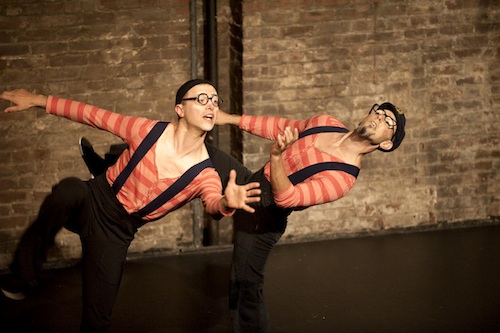 |
| The Submarine Show- Jaron Holander and Slater Penney |
Hollander and Penney are performing what they define as their "a-capella, foley mime duet" every day for the entire month-long run of the Fringe. Most shows
If one can step back and take a broad view of the festival, it's like a crystal ball of what is happening and what is about to happen in the performing arts world.
run for at least two weeks. The extended run poses an interesting challenge and opportunity for many U.S.-based performers who travel to Edinburgh.For Rain Anya and Sarah Bebe Holmes of the Paper Doll Militia the extended run was a test of stamina. They performed their warped, aerial fairytale This Twisted Tale 26 times last year in Edinburgh. Holmes said, "the show was able to grow and get better and tighter. We learned so much about our own show and own work." The opportunity for work to develop in front of an audience is rare in the U.S. where dance and physical theatre is often presented for a single weekend,or two, if lucky.
In many ways, the Edinburgh Fringe represents a rite of performance passage that tests the mettle of the participants. Abby McNally, the artistic director of A Mused Collective joked that this experience has forced her to apply her professional skills as much as her creative skills, even before arriving in Edinburgh. From the application process, to creating a "photo call" ( a Fringe ritual in which performers stage interesting performance "stunts" for local press), to mastering a 20-minute load-in, the Fringe is a jam-packed learning experience. "It is important to me as an artist to step beyond my comfort zone" says McNally, "I want to be challenged professionally, and I am also interested in gaining feedback from other artists and industry professionals."
McNally alludes to one of the key elements of the Edinburgh Fringe, the convergence of so many artists, arts managers, booking agents, press people and presenters. It becomes a representation of the field at large. While that presents incredible networking opportunities for individual artists, it also presents a broader opportunity to consider arts policy and management issues. If one can step back and take a broad view of the festival, it's like a crystal ball of what is happening and what is about to happen in the performing arts world. That prophetic view can give one the ability to effect change.
There is no better example of this than Jodi Kaplan's work at the Fringe. A few years ago, Kaplan, a spitfire dance agent based in New York, noticed how small the dance community at the Edinburgh Fringe was. This year, for example, less than five percent of the 106 shows are categorized as dance/physical theatre. More specifically, Kaplan recognized a dearth of American dance presented. She created the BookingDance Festival, a festival-within-a-festival, to spotlight American dance talent. Going on its fifth year, BookingDance has given American dance a broader platform in the European arts market and has developed into a premiere Fringe event.
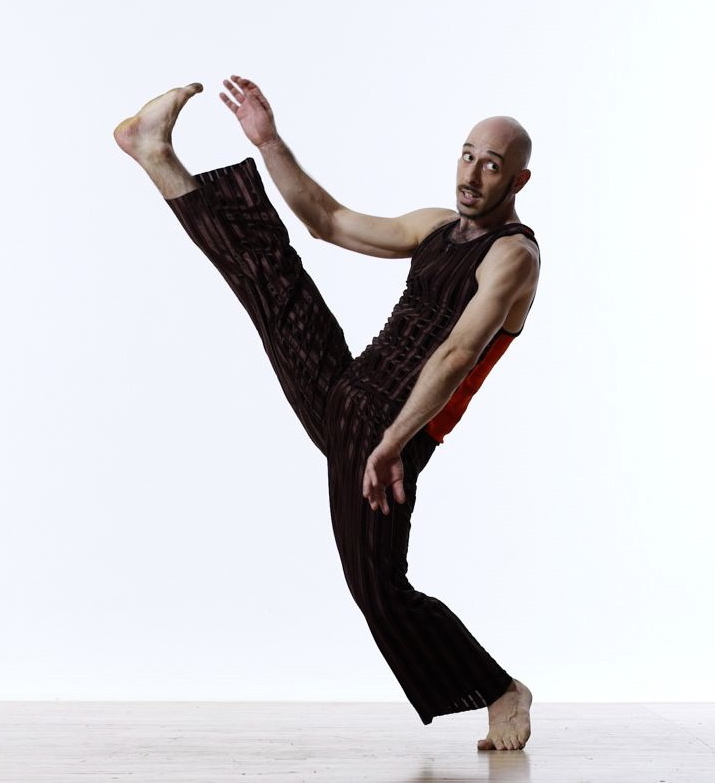 |
| Daniel Gwirtzman Dance Company ( New York) will be appearing as part of BookingDance Festival Edinburgh 2012 |
Kaplan bucks many Fringe trends: she stages a showcase format featuring eight dance companies on a single bill (most performances center on one event); she presents the show for just four days of the Fringe, and the show is generally family-friendly ( Fringe tends to cater to "mature" audiences). This very American format is unusual and risky. That being said, BookingDance is continually successful at the Fringe because Kaplan builds local connections. She's developed an internship program with two Scottish universities; educational outreach to local Scottish schools and dance studios; panel discussions and professional development opportunities for her dance companies and others and a ticket discount program for children and students. Kaplan has created long-lasting connections in the community that have led to a repeat, local audience. Her success helps position dance as a more prominent art form at the Fringe, and that benefits all of us artists who create and communicate through movement.
As I continue to talk with artists about the Fringe this is what strikes me most. Despite the massive workload, the stress of fundraising, the tangle of logistics, and even the competition for audience and press; the overwhelming sentiment is one of creative community, collaboration and solidarity.
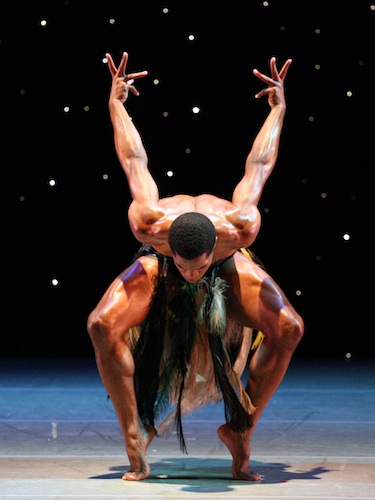 |
| Dallas Black Dance Theatre (Dallas,Texas)will be appearing as part of BookingDance Festival Edinburgh 2012 |
I can't wait to feel that teeming artistic energy that I imagine infusing the city air as performances pop up in bars, gardens, store windows and street corners at all hours. This will be my first time at the Edinburgh Festival Fringe, as it will for all of Bay-Area performers who are traveling to there this summer. And as a performer in my thirties who, like every member of A Mused Collective, has a career outside of my performing life (not a day job, but a career), performing at the Edinburgh Festival Fringe is a lifelong dream on the verge of fulfillment.
(Edited with author's permission, from an article first printed in InDance -July 2012)







